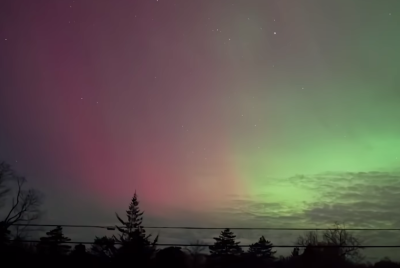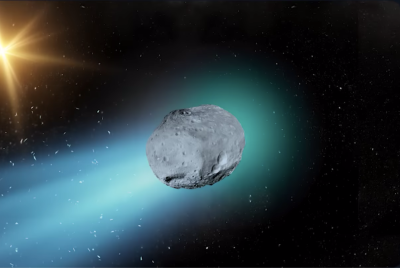Sky-Spectacle: 'Green Curtains' of the Northern Lights Stretch Across Texas and Florida
Rare geomagnetic storm sends auroras visible far south, captivating residents from Florida to Texas with dazzling green and pink skies

Residents across Texas and Florida experienced an extraordinary night sky this week as the Aurora Borealis surged far south of its usual Arctic home.
Triggered by a G4 geomagnetic storm, the northern lights painted the skies with streaks of green and pink — a spectacle so rare at these latitudes that many locals had never witnessed it before.
Scientists say a combination of intense solar eruptions and favourable magnetic conditions allowed the lights to stretch deep into the southern United States.
A Solar Storm Powerful Enough To Push Auroras South
The event followed an unusually energetic period of solar activity on 11 November, when a series of Coronal Mass Ejections (CMEs) launched vast clouds of charged particles toward Earth.
According to the National Oceanic and Atmospheric Administration (NOAA), the eruptions generated a severe G4 geomagnetic storm, strong enough to push auroral displays thousands of miles beyond their normal range.
The flares involved were classified as X-class, the most intense category of solar flare. NOAA's Space Weather Prediction Centre said the southward tilt of Earth's magnetic field — combined with high-velocity solar wind — created the perfect conditions for auroras over low-latitude states.
In Florida, where auroras rarely occur, residents reported rare glowing arcs over Cape Canaveral, as noted by Florida Today. Texans shared striking images from Livingston, Austin, and the Hill Country, recorded by local outlets including Your Conroe News.
Dr Patricia Reiff of Rice University said the combination of high solar-wind speed and a favourable magnetic orientation allowed the particles to penetrate unusually far south, energising atmospheric molecules that produce the familiar green and pink hues.
Community Reactions And Social Media Buzz
Residents across the southern US flocked outdoors to witness the spectacle. In Florida, locals reported glimpsing the 'green curtains' above Cape Canaveral, while Texans used long-exposure smartphone photography to capture the lights, according to CBS News.
Social media platforms quickly filled with images, turning the unusual event into a viral sensation.
Implications For Technology And Infrastructure
While visually stunning, the solar storm also raised concerns about its impact on technology.
According to a Reuters report, elevated solar activity delayed Blue Origin's New Glenn rocket launch at Cape Canaveral due to potential satellite interference.
Geomagnetic storms of this intensity can disrupt radio communications, GPS navigation, and power grids; however, experts say the general public does not need to take emergency measures.
Forecast And Viewing Tips
NOAA forecasts indicate the aurora may remain visible over the coming nights, with the possibility of another CME striking on Wednesday, potentially producing further southern displays.
Experts suggest seeking dark horizons with minimal light pollution for optimal viewing and using smartphones with long-exposure settings to enhance the colours.
The event demonstrates the far-reaching effects of solar activity and gave communities across the southern United States a rare opportunity to witness one of nature's most spectacular phenomena.
While such auroras are typically confined to northern latitudes, this week's display highlighted how powerful solar storms can create unforgettable skies even far from the Arctic, captivating residents and reminding the nation of the dynamic forces at work above.
© Copyright IBTimes 2025. All rights reserved.





















